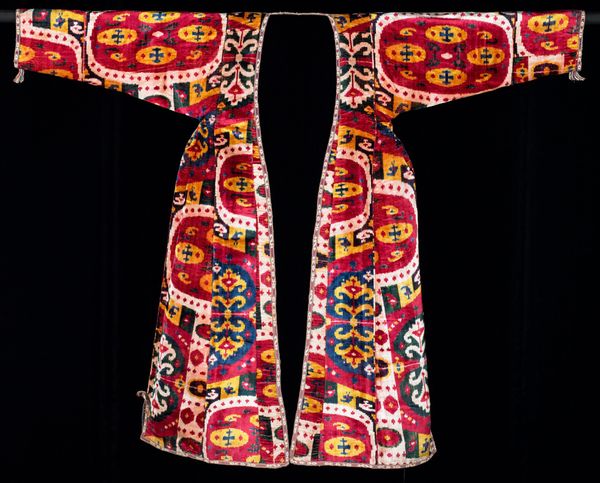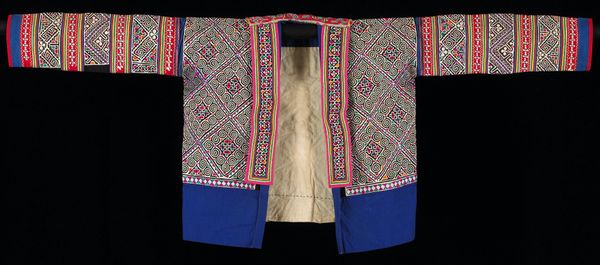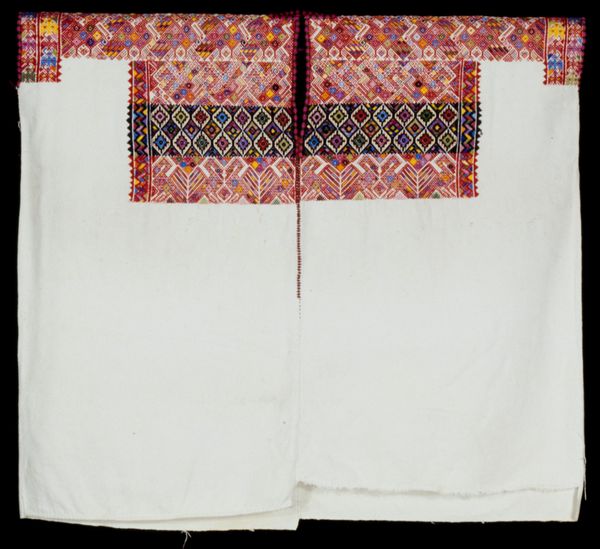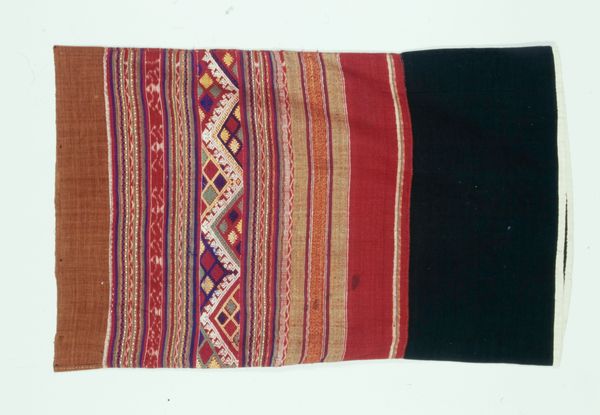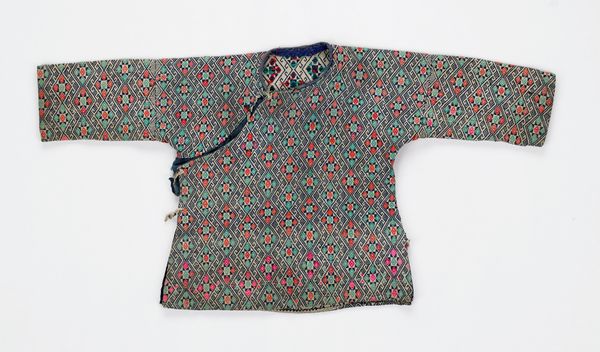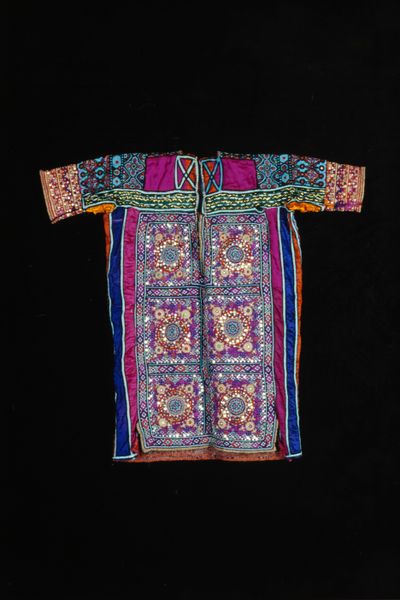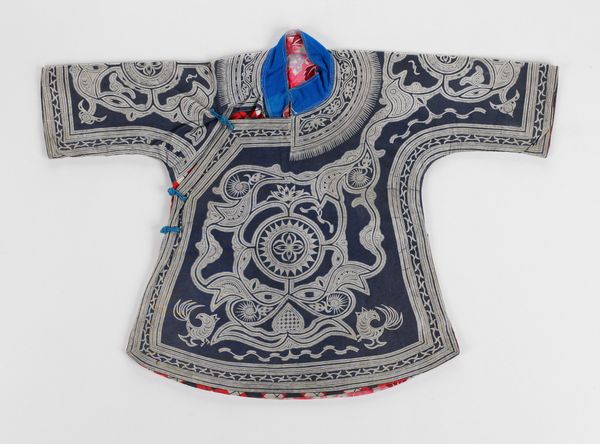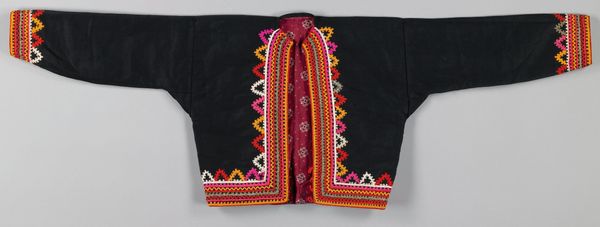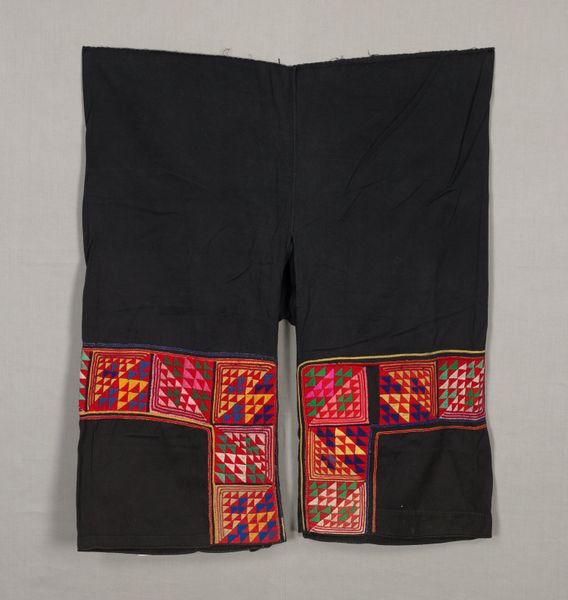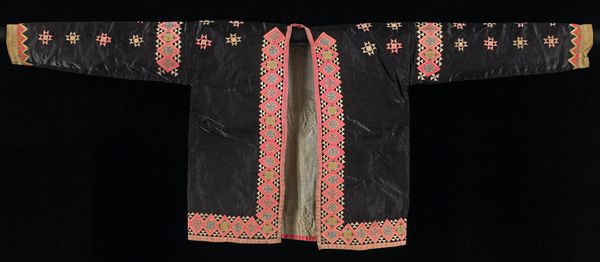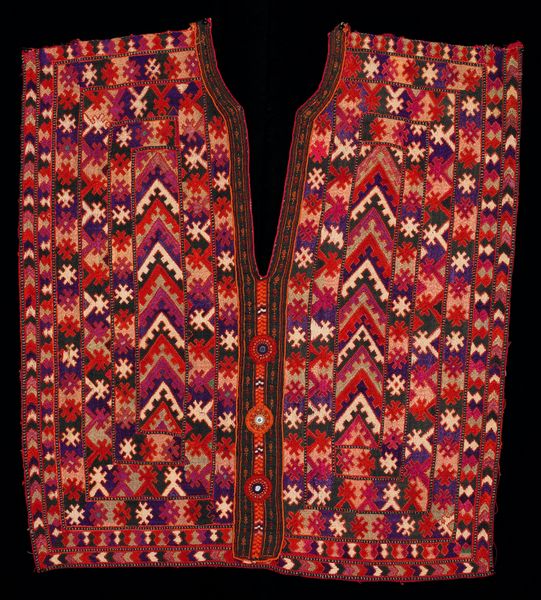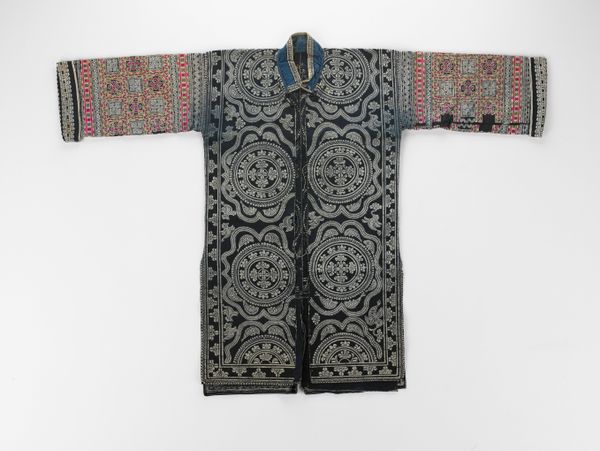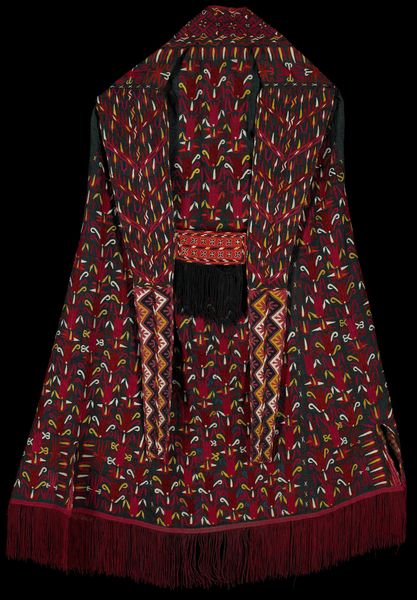
fibre-art, textile
#
fibre-art
#
fashion mockup
#
textile
#
collage layering style
#
fashion and textile design
#
hand-embroidered
#
geometric
#
fabric design
#
clothing theme
#
textile design
#
imprinted textile
#
layered pattern
#
clothing design
Dimensions: 21 1/2 x 23 in. (54.61 x 58.42 cm)5 1/4 x 9 in. (13.34 x 22.86 cm) (object part, back collar)
Copyright: Public Domain
Curator: This captivating garment is a woman's tunic, created around the 20th century by Hmong artisans. It's currently part of the collection at the Minneapolis Institute of Art. Editor: Wow, what strikes me immediately is the intense contrast. The floral pattern on the body against the meticulously embroidered geometric patterns on the sleeves... it feels so carefully constructed. Curator: It is. Hmong textiles often blend disparate elements like that. There's a freedom in the approach to combining patterns and colors. We should note, it’s made primarily of cotton and involved techniques like weaving, hand-embroidery, and collage layering to create these very intricate textiles. Editor: What's particularly interesting to me is thinking about the labor and the lives interwoven with these kinds of pieces. How much knowledge and skill went into creating something so beautiful, something that speaks to cultural identity? What was it like for the women making this tunic? Curator: The creation of such a tunic certainly held a social function within Hmong communities. The skills passed down through generations represented cultural continuity. It's not simply about aesthetics but the passing of traditions and knowledge. In Hmong culture, dress is a marker of identity and can be traced to regional and sub-cultural origins. Editor: That's precisely where I was headed! This isn't just clothing; it's a complex visual language. It tells stories, encodes history. Looking at the scale of the pattern-making, it makes me think about women’s work generally and the undervalued art forms that are dismissed as craft, and it prompts us to consider gendered expectations. Curator: The Pattern and Decoration movement also embraced that aesthetic, advocating for the elevation of craft and "domestic" arts within the fine art world. While this garment predates that movement, there are clear connections in terms of valuing pattern, texture, and the handmade. And while we can apply an art historical lens that understands influences between distinct styles, this textile remains specifically an expressive part of a culture’s visual representation. Editor: Precisely. It resists simple categorization and really makes us grapple with intersectionality. It holds its own powerful and very unique space! Curator: Absolutely. A remarkable testament to artistry, culture, and identity, woven into the fabric of everyday life. Editor: Yes, clothing is more than just protection, but it can be a cultural force.
Comments
No comments
Be the first to comment and join the conversation on the ultimate creative platform.
